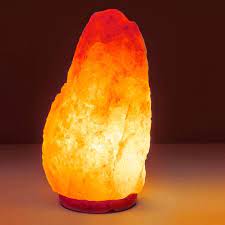
Using Celtic Sea Salt in your recipes not only adds a unique flavor to your food but also offers unexpected health benefits. It can ease joint discomfort, encourage healthy cell growth, and repair skin damage. Natural salts such as Himalayan sea salt, Celtic sea salt, and fleur de sel are used by many people today for their health benefits.
Celtic Sea Salt:
Celtic sea salt is a type of salt that comes from the Celtic Sea off the coast of France. Sea salt is traditionally obtained by evaporation and drying in the sun. It retains more moisture than refined table salt and has a slightly moist flavor. Sea salt may also be dark or grayish in color, rather than white or pink like other salts. This is due to the high mineral content, which is retained in the salt as it evaporates. This is why sea salt is valued as a source not only of iodine, but also of many other important trace elements such as magnesium, iron, manganese, zinc, iodine, and potassium.
Although this sea salt originates only from the west coast of France, most sea salt sold under the trade name “Celtic Sea Salt” is harvested in various parts of the world.
Benefits of Celtic Sea Salt:
Celtic salt has a unique character depending on which part of the world it was harvested from and the geology of the region, and many people prefer its taste. The crunchy, flaky sea salt is especially prized for its use in baked goods and presentations. Celtic sea salt has a very distinctive, delicate, spicy texture that gives it a salty flavor.
However, it has also been used for centuries for its many health benefits
Healing skin wounds:
Celtic sea salt is a popular remedy for moisturizing and cleaning damaged or cracked skin. It is also recommended as an exfoliant. The salt itself has a bactericidal effect, and the trace amounts of essential minerals act as a balm for damaged skin and soothe inflammation. Salt water cleaning is recommended for rashes, acne, and rosacea. However, it may be too drying for sensitive skin if repeated many times, so a moisturizer is recommended immediately afterwards.
Promotes healthy cell growth:
Celtic sea salt contains 92 trace elements of essential minerals. Twenty-four of these minerals are considered essential for many of the body’s basic functions. Deficiency can result in symptoms such as muscle cramps, nervous system disorders, and brain damage. Sea salt also promotes better circulation of fluids in the circulatory system and throughout the body. Normal salt can cause fluid to build up around joints, leading to swelling and kidney problems.
Reduces the amount of mucus:
It is an excellent dehumidifier and can reduce swelling in the nose and sinuses and mucus buildup in the lungs. It is also recommended for treating water retention and fluid buildup in joints.
Relieves joint pain:
Recently, researchers have shown that bathing in a bath with a salt concentration of 25% or higher can relieve inflammation in swollen joints caused by osteoarthritis. Low salt levels can actually worsen inflammation, while high salt levels dehydrate the cells around the swollen area and reduce inflammation.
Essential Iodine:
Iodine is a chemical that is not naturally produced by the body, but iodine is essential for regulating the body’s hormones. Iodine is used by the thyroid gland to make hormones. When iodine is deficient, goiter forms in the thyroid gland. Research by Guy E and Ph. Abraham found that vitamin C transports iodine into the body more efficiently and that Celtic Sea Salt is effective in preventing iodine deficiency. Some studies have shown that such deficiencies can cause infertility and are a high-risk factor for certain types of cancer. While many salts have iodine added, also it is a natural source of this important element.
Celtic Sea Salt vs Himalayan Salt:
- Celtic sea salt is obtained by evaporating seawater. It is usually dark in color because it contains trace elements.
- Himalayan salt has a slight pink tinge because of the large amount of iron oxide in the sediment.
- Himalayan salt contains more potassium, while it is contains less sodium and more calcium and magnesium.
- Himalayan salt is usually ground finer, while this salt is stored in coarser grains to preserve flavor and reduce water loss.
Side Effects of Celtic Sea Salt:
Excessive sodium intake has been shown to cause high blood pressure (hypertension) and impair cardiovascular health. However, sodium in amounts between moderate and low is safe. The maximum recommended daily intake of sodium is 2,300 mg for adults. For people with a history of heart disease or those at high risk for heart disease, the maximum allowable amount is 1,500 mg per day. Knowing the origin of sea salt is very important in today’s world of rising concentrations of heavy metals such as mercury and lead in seawater.
